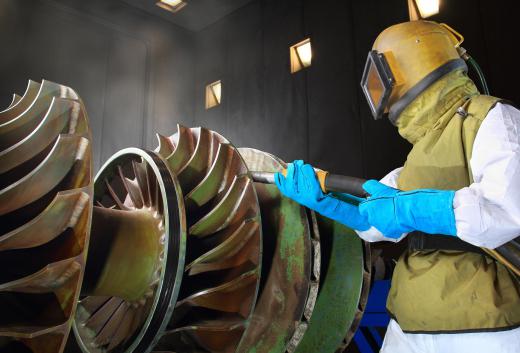What are the Different Types of Geothermal Power Plants?
There are three different types of geothermal power plants: dry steam plants, flash steam plants, and binary cycle plants. Geothermal power plants use water that is naturally heated by the earth in order to create electricity. This is called geothermal water. The plants use this geothermal water to turn the blades of the plant’s turbine. Each type of power plant accomplishes this feat in a slightly different way.
When a geothermal power plant uses steam in the same form as it comes from the ground, the plant is called a dry steam plant. In dry steam geothermal power plants, wells are drilled into the rock until it reaches the reservoir. Steam reaching temperatures of 302 °F (150 °C) or more is then brought up to the surface. Once the steam reaches the turbines, it spins the turbine blades. This generates electricity.

In flash steam geothermal power plants, water is pumped from the reservoir under high pressure. The pressure keeps the water in a liquid state even though the water’s temperature is well above the boiling point. Once it reaches the surface, the pressure is relieved and water greater than 360 °F (182 °C) flashes into steam. The steam is then used to turn the turbine blades. The water that does not turn to steam, as well as the water that condenses after turning to steam, is pumped back into the reservoir.
Binary cycle geothermal power plants do not use water to turn the turbine blades. Rather, water with temperatures between 225-360 °F (approximately 107.2-182.2 °C) is used to heat a separate fluid that has a boiling point well below that of water. When this fluid is vaporized, the vapor is used to turn the turbine blades. In this system, the water and the fluid never combine. Since these plants can use fluids with boiling points lower than water, they can make use of lower temperature geothermal water.
In areas where there is hot, dry rock or where there is not enough water pressure, a system called hot dry rock thermal energy, called enhanced energy systems in North America, can be used. In this system, two holes are drilled into the rock. Water is then pumped into the rock through one hole. The rock’s heat heats up the water which is then pumped up the second hole and is used to generate electricity. The water is then pumped back into the first hole to restart the cycle.
AS FEATURED ON:
AS FEATURED ON:











Discussion Comments
@Valleyfiah- Actually, the United States only generates about 0.4% of its power from geothermal resources. Geothermal energy is a great form of energy, but with current regulations and technologies, geothermal power plants will not likely displace coal power plants any time soon. Most geothermal resources are found near plate boundaries, explaining why most U.S. geothermal electricity generation occurs in the west. The major global resources are around the Pacific Rim, in the Atlantic trench, and in Africa's Rift Valley. These are places where the earth's crust is pulling apart or converging with each other.
This is a limiting factor in the role that geothermal electricity generation can play. There is an estimated 70 TW of available geothermal resources accessible with today's technology, but the energy can only be generated in certain areas.
What a great article on how geothermal power plants work. How much of the United States energy comes from geothermal power plants? Are there enough geothermal resources to allow geothermal electricity generation to be a viable option for replacing fossil fuel plants?
Great information. I love your site. I am learning a lot. Thank you.
Post your comments